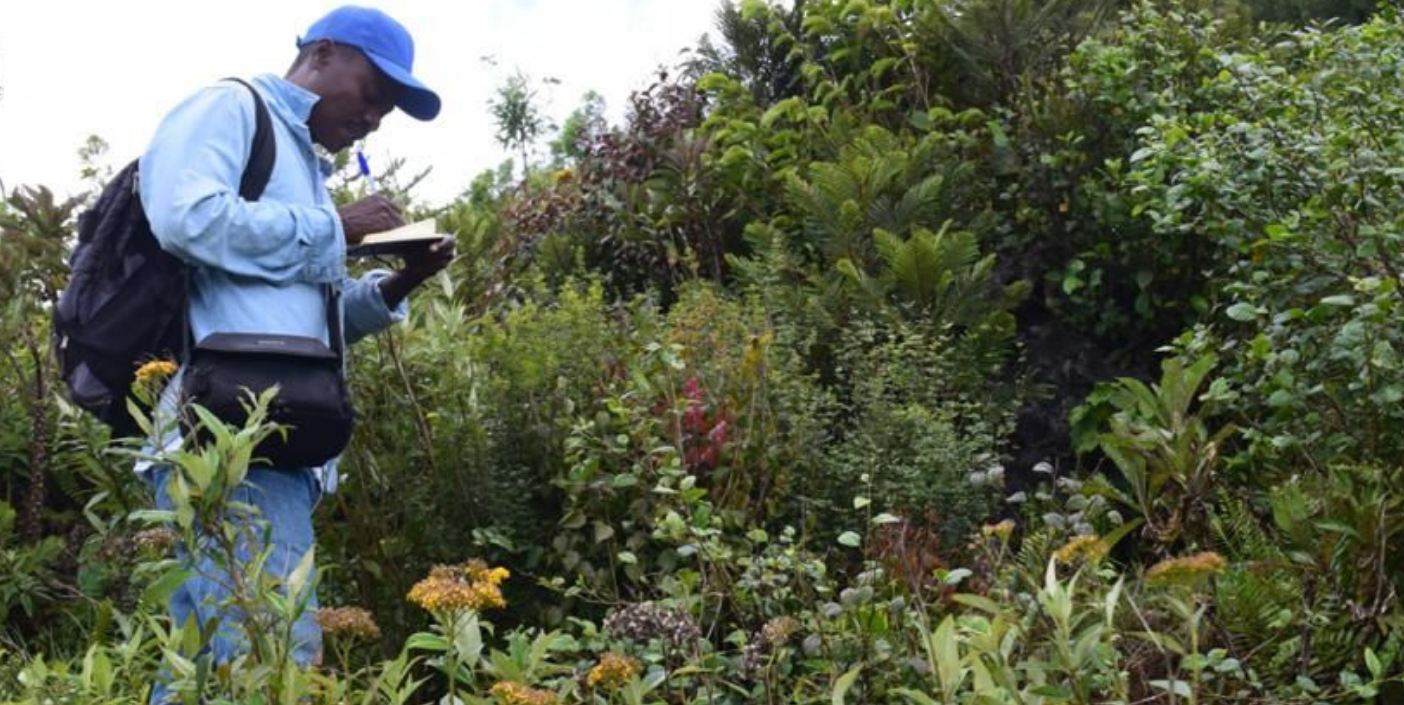
Scientists in Haiti and at the Garden team up to document the plant life of Haiti—the first broad study in a century and a first step to protecting imperiled species.
How do you manage land if you don’t know what’s growing on it? The question vexes botanist William Cinea, founder of Jardin Botanique des Cayes in Haiti and one of Naples Botanical Garden’s key partners in regional conservation.
In recent months, Cinea has taken on an ambitious study of his nation’s plants with support from the Garden’s Conservation Team. The island’s rich biodiversity is at stake, Cinea says, simply from lack of knowledge and, subsequently, a lack of a conservation plan.
“(Communities) are destroying plants because they don’t know the importance of them,” Cinea says.
Plant life lost in Haiti reverberates well beyond the nation’s borders.
“The Caribbean region is a plant diversity hotspot, and that diversity supports entire ecosystems,” says Chad Washburn, the Garden’s Vice President of Conservation. “Many of the plants are endemic to one or a few islands and are facing significant threat of extinction. Once they are lost, they are gone forever, taking away potentially important parts of the ecosystem.”
The plant life of Haiti has gone a century without serious review. Swedish botanist Erik Leonard Ekman surveyed its flora from 1924 to 1928. American researchers have done some follow-up work since, but Cinea says there’s little up-to-date information about native and endemic plants, which comprise about 40% of the plants in Haiti and the Dominican Republic. He aims to change that. Experts at our Garden will help—from afar, as COVID-19 remains a serious risk.
Together with their staffs, Washburn and Cinea meet remotely; the team in Haiti does the field work and sends seeds to the team in Naples, which in turn conducts research on how to grow them, shares the results with Cinea, and adds the contributed plants to our collections for display and to safeguard their genetics.
“We’ll collect the seeds, and (Naples) will help write the protocols,” Cinea says. He’s referring to propagation protocols, or detailed instructions on how to grow plants from seed, and how we can best conserve them for the long term in the Garden’s seedbank.
“We’re partnering together to unlock how to grow these plants,” Washburn says. “We’ll share that information and work together to save these plants in their habitat.”
His latter point is an important one. The Global Strategy for Plant Conservation, the world’s guidelines for saving plants, favors protecting plants in their places of origin to exporting them for safekeeping. Naples Botanical Garden partners with scientists throughout Latin America and the Caribbean to work toward achieving the strategy’s goals.
“The idea of restoration is not a common one in Haiti,” Cinea says. Native plants are hard to find in nurseries because growers don’t know how to find, produce, and maintain them. One challenge is that well-intentioned nongovernment organizations supply nonnative trees for use in the landscape. The donated species tend to grow quickly but don’t hold up to the island’s climate and storms.
“When they are fast-growing, they are also fast-falling,” Cinea quips. He intends to share what he learns with nursery growers and encourage them to increase their stock of native plants. The entire Caribbean region—Florida included—stands to benefit.
As temperatures rise, the Garden and its partners are actively researching Caribbean plants to identify species that landscapers may wish to introduce to urban environments because of their ability to withstand hotter temperatures and the intense storms that come with them.

The partnership has several other tentacles. Garden educators are advising Cinea on how to set up citizen-led plant surveys using the iNaturalist app, following the success of last spring’s “Project Stay Planted” citizen-science project, which challenged participants to chronicle plants in their backyards and neighborhoods.
“We want to build a database for Haiti,” Cinea says, referring to the plant information he and, eventually, residents collect. In Naples, Garden scientists will run the data Cinea provides through mapping software to identify areas of concern—places where threatened plants are found, for example—so that Cinea can provide that vital data to policymakers.
Cinea advises our Garden, as well. Washburn has asked for his guidance on plant selection and display in the Kapnick Caribbean Garden, helping us provide an authentic experience for guests and ensure we’re collecting and conserving significant species.
“We want it to truly reflect the Caribbean,” Washburn says. “We want that for all of our gardens—to accurately and authentically reflect their cultures. For us to do that, we need to involve experts from those regions to make sure they really do so.”
The two leaders say protecting our part of the world is a shared responsibility—particularly in light of the United Nation’s declaration proclaiming 2021-2030 the “Decade on Ecosystem Restoration.”
“It’s not just about Haiti. It’s not just the Dominican Republic,” Cinea says. “We have common problems, and we need to have common solutions.”
Washburn agrees.
“We are all facing similar problems. We have to work together to overcome them.”
This article originally appeared in Cultivate, the Garden’s seasonal magazine.
 About the Author
About the Author
Jennifer Reed is the Editorial Director of Naples Botanical Garden and a longtime Southwest Florida journalist.

